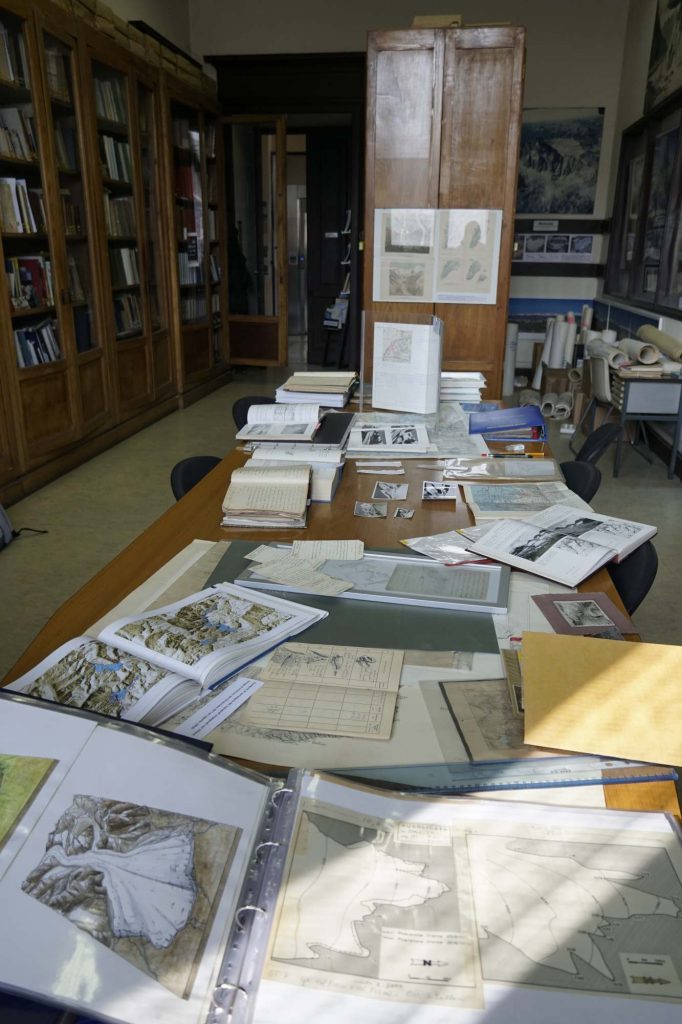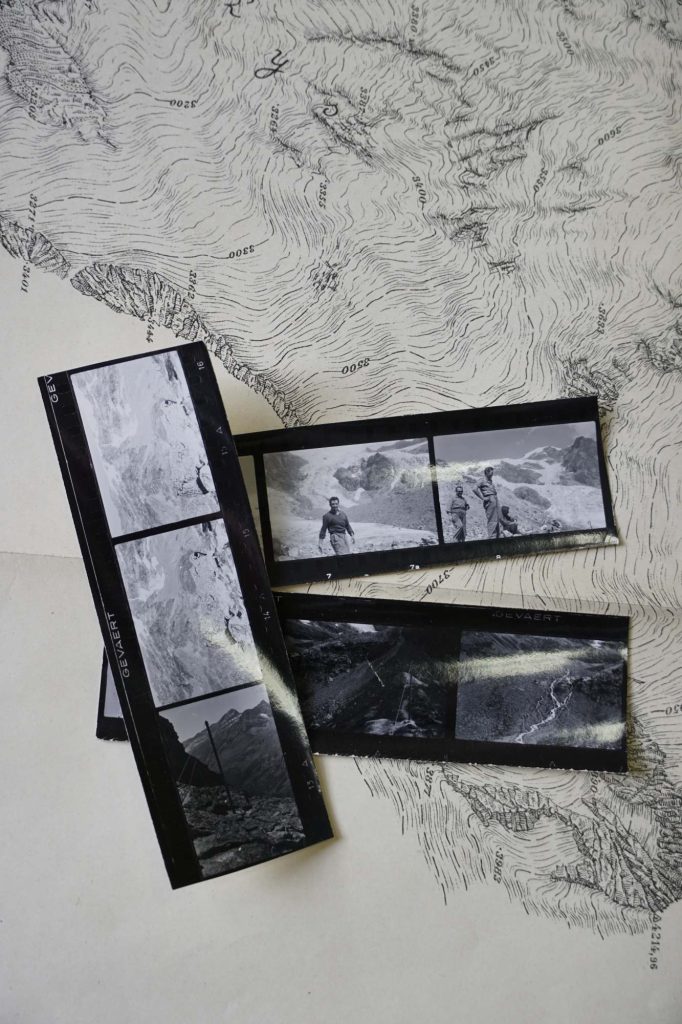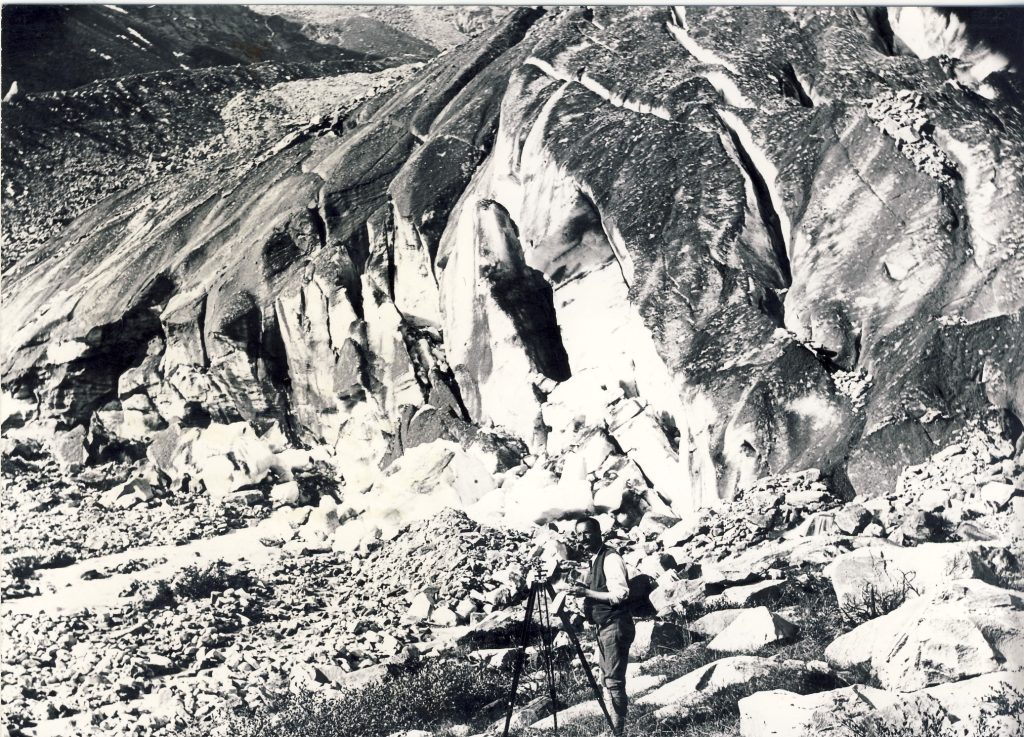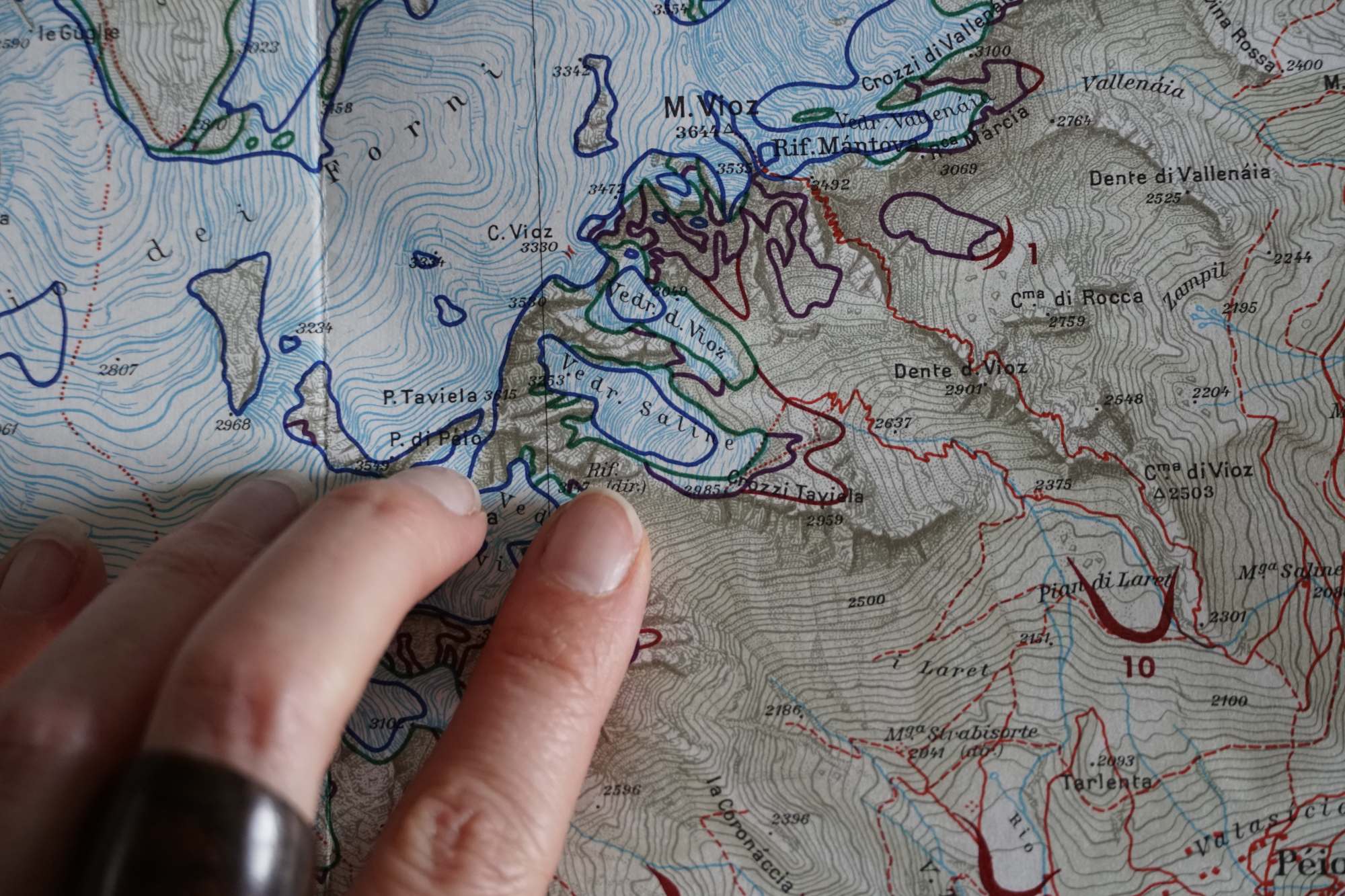In March I returned to Biella in the NorthWest Italian Alpine region in order to continue my residency and do further field research on fluvial systems in relation to climate change.
My excursions also took me to the city of Torino. Here I’ve spent several days at the Comitato Glaciologico Italiano (CGI), the Italian Glaciological Committee, who graciously welcomed me and my research for those days. The CGI has been active in Italy since 1895 and has been coordinating and promoting research in the field of glaciology since. Needless to say that after more than a century quite some documentary material has accumulated there. Their collection consists of numerous photographs of the glaciers over different periods of time, piles of records of scientific measurements, lots of odd looking historical devices and instruments for measurement and stereo viewing as well as a specialized, but well equipped library with literature on glaciers.


I probably could have spent several more weeks in those archives, browsing through the history of the glaciers. Luckily CGI, namely Prof. Marko Giardini, the vice president of CGI, who offered me access and space there, and Stefano and Giovanni Mortara, who answered all my questions, supported my interest and helped me a lot by not only providing several scans of photographs, dating from as early as 1860 until the late 20th century, as well as different maps but also sharing photos and files. Thus I could bring some photographed pages of a true treasure along with me: a collection of handwritten field-note diaries dating from 1920-1950 of Ardito Desio, one of the most important Italian geologists and glaciologists from the 20th century. His extensive documentation of the alpine glaciers provides valuable data for measuring the decline of glaciers and calculating further scenarios.


The same data is now going to be a part of my artistic research, as I will feed these field-notes to an AI system. Together with the photographs of the glaciers, the algorithm of the machine learning models will enable story-telling for us, as it will create landscapes of glaciers that don’t and will never exist. These speculative parallel scenarios are only one aspect where I draw inspiration from, but before I can even get there, the field-notes need to be deciphered first. The handwritten notes and drawings date from 1920 until the 1950s. The century-old pencil is already faded and the handwriting itself was probably written with hands stiff from the harsh and cold weather conditions Ardito Desio had to endure while collecting the data. It is quite exciting to time-travel along those blurred lines and I am curious what I will find between them.

Back in Biella I had the chance to visit the Sella Foundation. The Sella Foundation has been collecting and conserving all kinds of documents organized in archives since 1980. The archival categories vary from politics over economics, letters and personal papers, photographs and collections of documentary and artistic value. The head of their photographic archive Andrea Pivotto introduced me to the photographic collection which consists of approximately 1,000,000 pictures of local history and mountains! Needless to say I was more than pleased to get access to Vittorio Sella’s pictures taken from 1880 to 1890 and also those of Fondo Ferrari dated from 1890 to 1915. Slowly the glacier-time-travel-puzzle comes together.

Both archives I visited are inspiring places. It is always impressive for me to see historical collections and be able to browse through hidden treasures and follow the traces of glaciologists decades ago. With the glaciers diminishing at a rapid rate due to effects of climate change, it will also affect the water availability for the following river networks. Glaciers are not only a large water storage, they are the memory of our earth. Like the archives I visited, they store within their materiality information about the climate in past times, air and rain pollution, radiation, and remnants of living beings. With their rapid melting, these pictures I am looking at in the archives will soon document memories of bygone glaciers.

